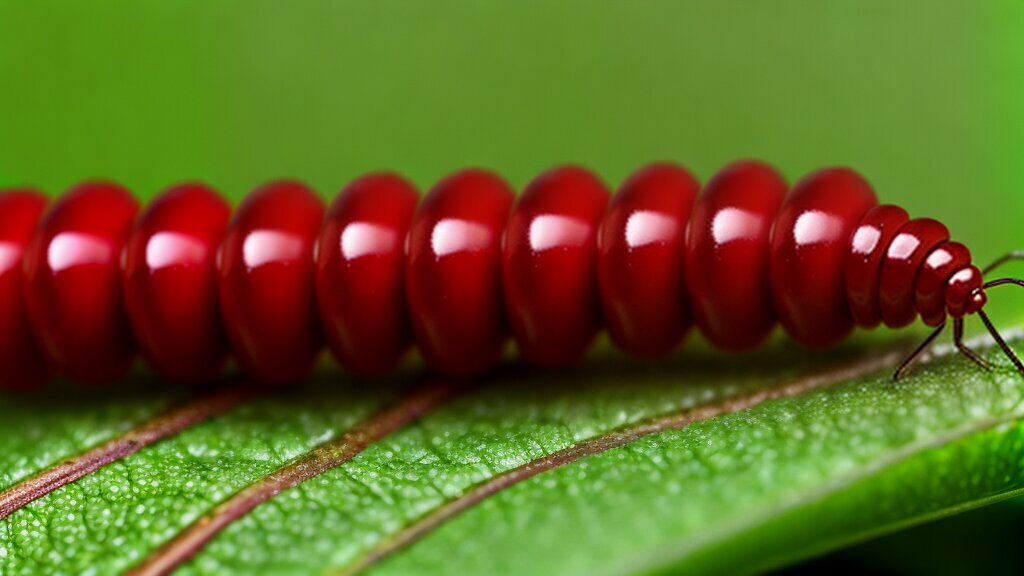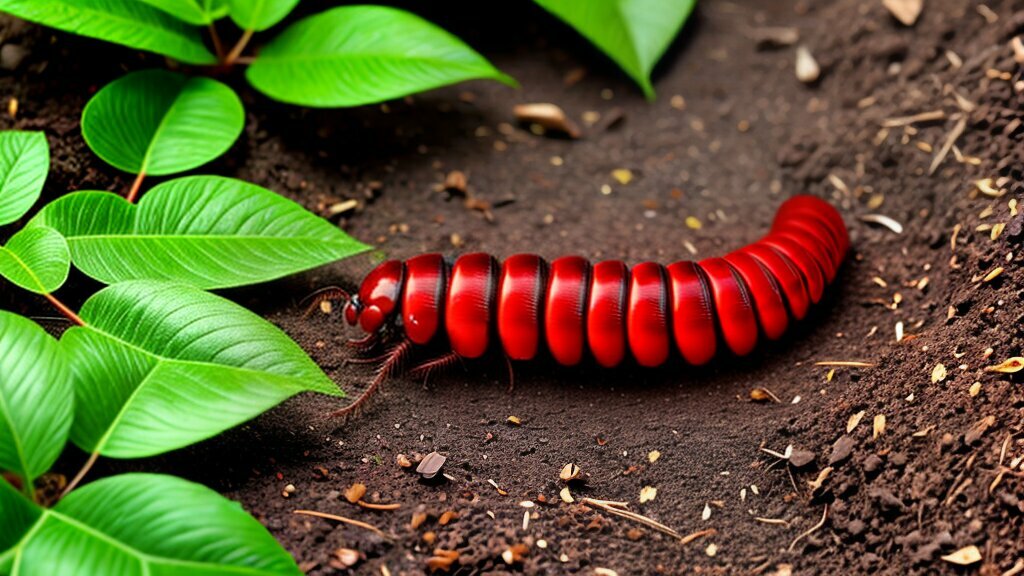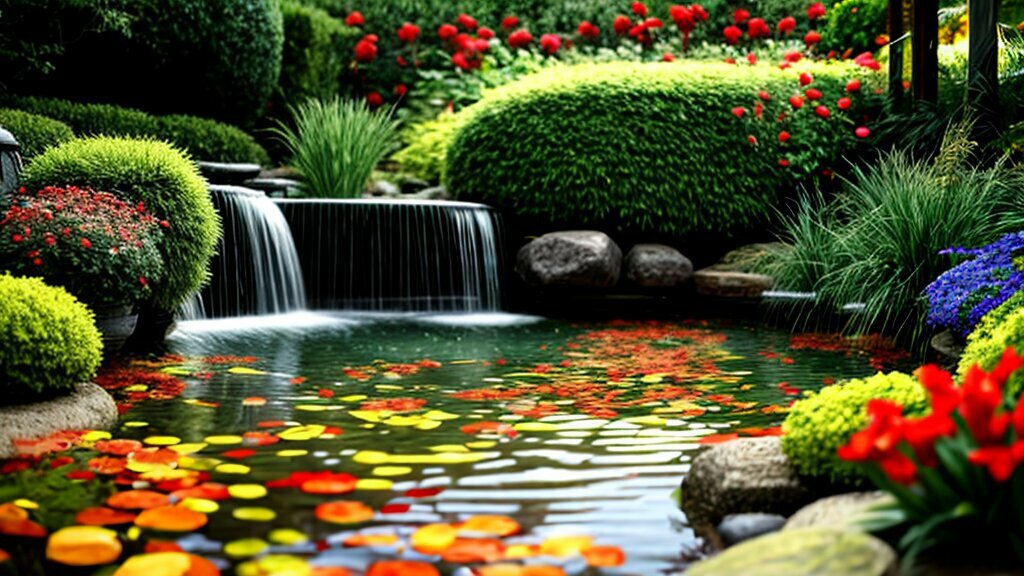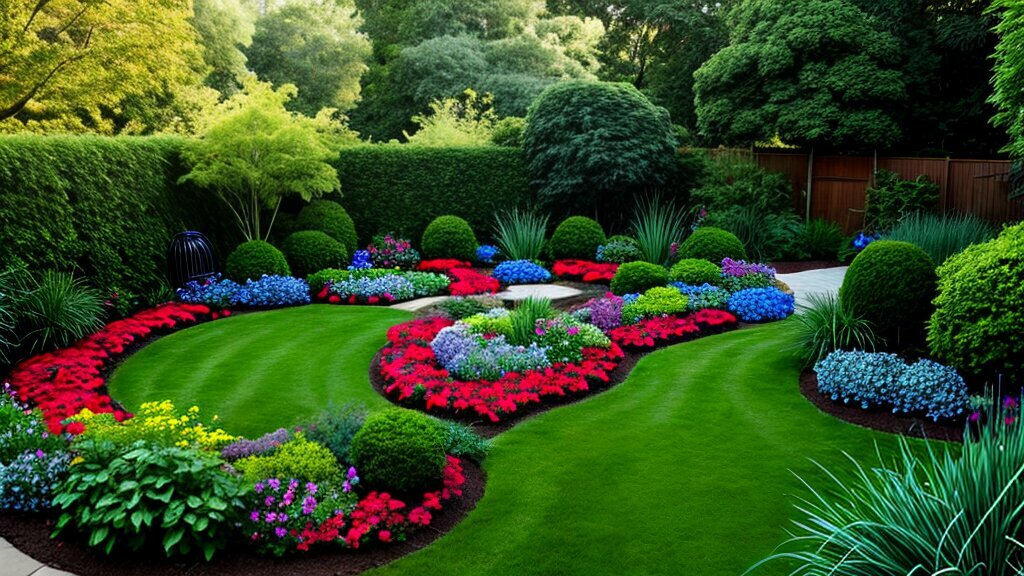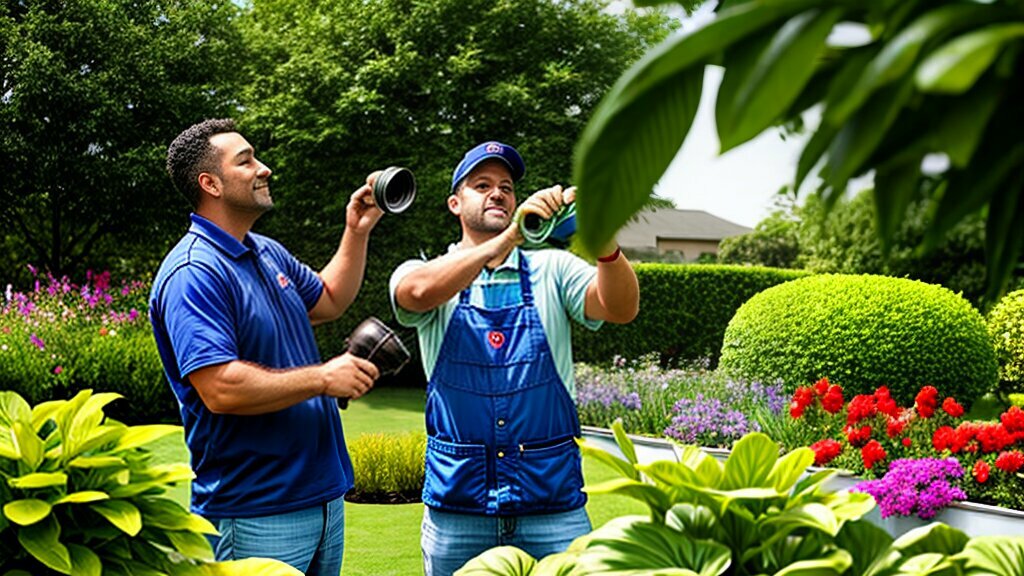If you’re an avid gardener, you know the importance of protecting your plants from pests. While many insects can help your garden flourish, some pests like the red garden millipede can cause significant damage. Understanding their behavior and identifying them is crucial to maintaining a healthy garden. In this comprehensive guide, we’ll discuss everything you need to know about red garden millipedes, from identifying them to managing their population and preventing infestations.
Key Takeaways
- Red garden millipedes can cause damage to plants and gardens, making pest control crucial for gardeners.
- Understanding the behavior and habitat of red garden millipedes is essential to identifying and managing their population.
- Natural and chemical pest control methods can be used to manage red garden millipedes, but prevention is always the best approach.
- Regular monitoring and maintenance can help prevent red garden millipede infestations and minimize damage to your garden.
Understanding Red Garden Millipedes
Red garden millipedes belong to the family Xystodesmidae and are commonly found in gardens across the United States. They are reddish-brown in color and have two pairs of legs per body segment, unlike centipedes which only have one pair per segment. These millipedes grow up to 2 inches long and are active at night.
Red garden millipedes are detritivores, meaning that they feed on decaying plant material and other organic matter in the soil. They play an important role in the garden ecosystem by breaking down organic matter and recycling nutrients.
These millipedes prefer moist environments and are often found in areas with high humidity levels, such as under rocks, bricks, or mulch. They may also seek shelter under plant debris or in the soil during the day.
Red Garden Millipede Species
While the red garden millipede is the most common species found in gardens, there are other millipede species that may also be present. These include:
| Millipede Species | Distinct Features |
|---|---|
| American giant millipede | Large size (up to 15 inches), dark brown or black in color, and smooth texture |
| Pill millipede | Spherical shape, pill-like appearance, and ability to roll into a ball |
| Bristly millipede | Distinct bristles along the body, reddish-brown or black in color, and up to 2 inches long |
It is important to properly identify the millipede species present in your garden to determine the appropriate control and management methods.
Identifying Red Garden Millipedes
The red garden millipede, also known as the “rusty millipede,” is a common species found in gardens. They are easily recognizable by their long, cylindrical body with multiple segments, each with two pairs of legs. Red garden millipedes are typically reddish-brown in color and can grow up to 1.5 inches in length.
One way to identify red garden millipedes is to look for the characteristic dark stripes on their back. These stripes run down the length of their body and are separated by lighter-colored segments. Another distinguishing feature is their antennae, which are short and pointed.
It’s important to note that red garden millipedes may be confused with other millipede species commonly found in gardens, such as the greenhouse millipede or the almond-scented millipede. While these species may look similar, they have distinguishing features that can help differentiate them from the red garden millipede.
| Red Garden Millipede | Greenhouse Millipede | Almond-scented Millipede |
|---|---|---|
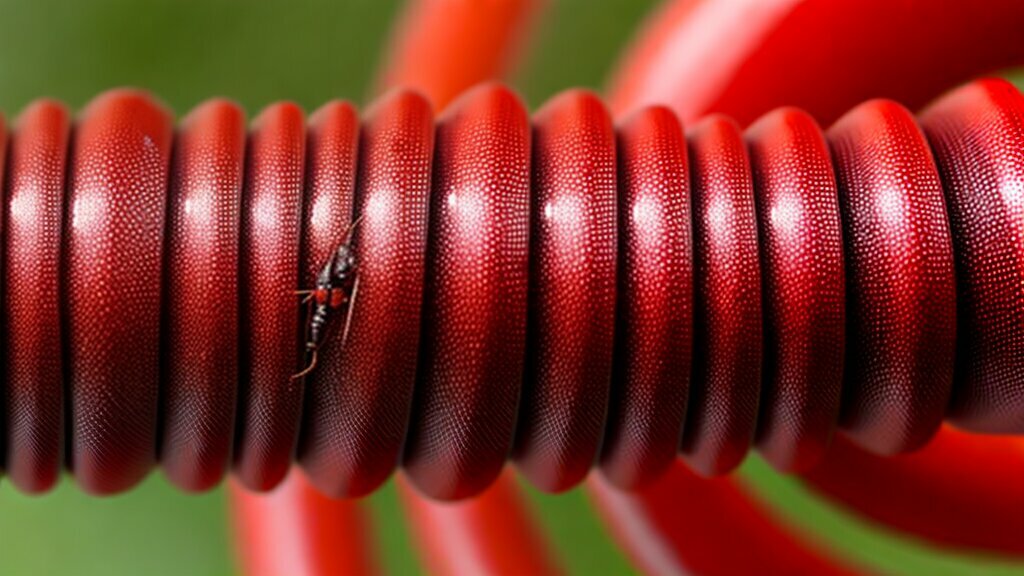 |
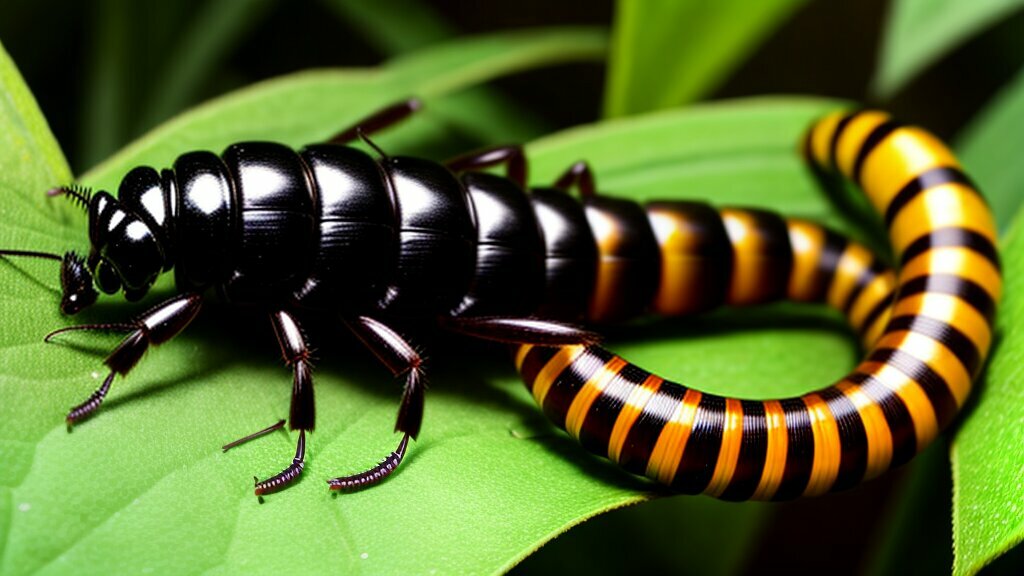 |
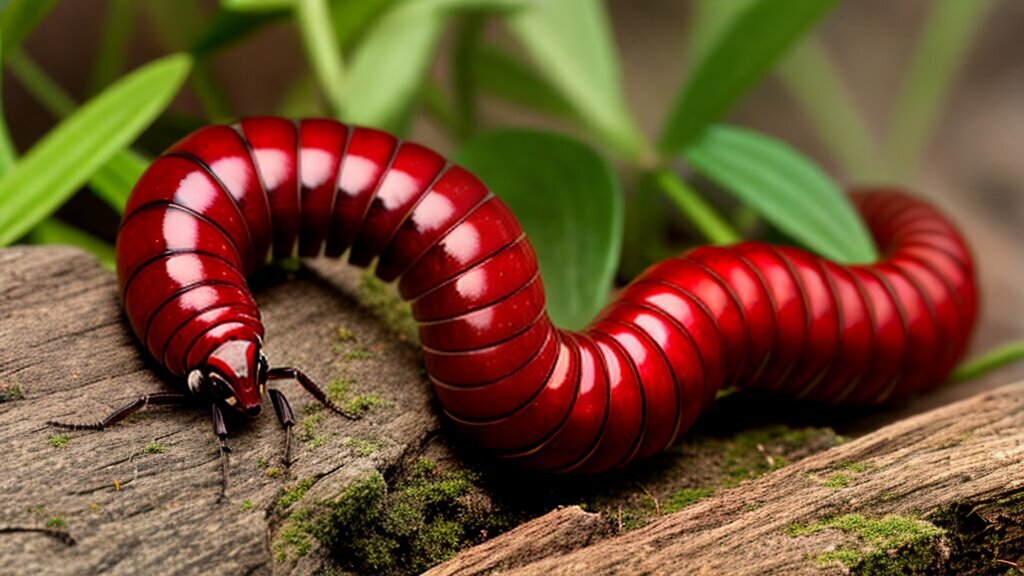 |
| Reddish-brown with dark stripes | Gray with yellow-brown stripes | Dark brown with almond scent |
| Short, pointed antennae | Long, thin antennae | Short, rounded antennae |
By understanding the distinguishing features of red garden millipedes, you can effectively identify them and implement appropriate pest control measures.
Red Garden Millipede Infestation: Signs and Symptoms
If you notice your garden plants starting to wilt, or if you see damage to stems or roots, you may have a red garden millipede infestation. These pests can also create unsightly burrows in the soil, causing tripping hazards and damage to your garden tools.
The first step in identifying a red garden millipede infestation is to look for the millipedes themselves. These pests are typically red or dark brown in color, with long, segmented bodies that can range from a few centimeters to over 10 centimeters in length. They are often found hiding under stones, logs, or other garden debris, or in the soil itself.
You may also notice an increase in other garden pests, such as slugs, snails, or pill bugs, as these insects tend to coexist with red garden millipedes. Additionally, you may see patches of dead or dying plants, which can be a result of red garden millipedes feeding on the plant roots.
To confirm that you have a red garden millipede infestation, look for the telltale signs of their presence. You may see their droppings, which resemble small, dark pellets, or the distinctive, spiral-shaped burrows they create in the soil.
Tip: Checking your garden regularly for signs of red garden millipedes will help you catch an infestation early, before it has a chance to cause serious damage. Early detection can also make control methods more effective and reduce the risk of spreading the infestation to other gardens or natural areas.
Natural Pest Control Methods for Red Garden Millipedes
Red garden millipedes can be managed using natural and organic pest control methods. These methods are safe, environmentally friendly, and help to maintain the garden’s natural balance.
One effective method is companion planting. Planting certain types of plants and herbs near susceptible plants can deter millipedes. Popular companion plants include garlic, onions, and chives, which have a strong odor that repels millipedes.
Habitat modification is another natural method. Removing organic debris, such as dead leaves and grass, from the garden can significantly reduce the millipede population. Millipedes thrive in moist environments, so reducing watering and improving drainage can also help to deter them.
Biological control options can also be used to manage millipedes. Predators, such as ground beetles, can help to reduce the millipede population. Nematodes are microscopic worms that can be added to the soil to target millipedes specifically. They are safe for other garden insects and do not harm plants.
It is important to note that natural pest control methods may take longer to see results than chemical methods. However, they are a safe and sustainable option for gardeners who prioritize environmental responsibility.
“Natural pest control methods may take longer to see results than chemical methods, but they are a safe and sustainable option.”
Effective Pest Management Strategies
When it comes to managing red garden millipedes, it’s crucial to adopt a holistic approach that considers a range of pest management strategies. Integrated Pest Management (IPM) is an effective approach that combines various pest control methods to minimize the use of pesticides.
One of the first steps is to reduce the millipede population by removing any hiding places, such as debris, rocks, and mulch. Physical barriers, such as copper tape or mesh, can also be effective in preventing millipedes from entering garden beds.
Biological control options, such as nematodes and predatory insects, can be introduced to target millipedes while avoiding harm to beneficial insects. Companion planting is another effective natural approach, as some plants can repel millipedes and attract predatory insects.
Regular garden maintenance, such as soil aeration and proper irrigation, can also help reduce millipede populations and prevent infestations. It’s essential to monitor the garden regularly and take action at the first sign of reinfestation.
IPM involves using a combination of methods to manage pests and minimize environmental impact. By adopting proactive pest management strategies, gardeners can reduce the need for chemical pesticides and maintain a healthy garden ecosystem.
Red Garden Millipede Control: Chemical Methods
Chemical methods should be considered a last resort for controlling red garden millipedes. However, if other pest control methods have failed, pesticides may be necessary to reduce their population. When using pesticides, it is important to follow the instructions on the label carefully and use them responsibly to avoid harming beneficial insects and other wildlife.
| Pesticide Type | Application |
|---|---|
| Pyrethroids | Applied as a residual spray, pyrethroids can be effective against red garden millipedes. Caution should be exercised when using pyrethroids, as they can harm bees and other pollinators. |
| Insect Growth Regulators (IGRs) | IGRs are effective in controlling red garden millipedes in their juvenile stages. They work by disrupting the pests’ growth and development, ultimately leading to their death. These should be used with caution, as they can harm beneficial insects. |
| Baits | Baits can be used for controlling red garden millipedes by attracting them to the poisoned bait. Baits can be applied in granular form or liquid bait stations. |
It is important to note that chemical methods may only provide temporary relief. They do not address the underlying cause of the infestation and can even make the problem worse in the long term by creating pesticide-resistant pests. Therefore, it is essential to use pesticides responsibly and in conjunction with other pest control methods.
Preventing Red Garden Millipede Infestations
Prevention is the best approach to managing red garden millipedes. By making your garden an unattractive environment for them, you can prevent infestations from occurring or spreading.
Here are some preventive measures you can take:
- Proper garden maintenance: Keep your garden clean and tidy, removing any plant debris and weeds that can serve as shelter and food sources for millipedes. Regularly mow your lawn and prune plants to reduce hiding spots.
- Sanitation: Clean garden tools and containers before and after use to prevent millipedes from hitching a ride into your garden. Keep your compost bin away from your home and garden, as it can attract millipedes and other pests.
- Soil improvement: Red garden millipedes thrive in moist soil, so avoid overwatering your plants and improve drainage in your garden. Add organic matter, such as compost or aged manure, to your soil to reduce its moisture content.
By implementing these practices, you can create an unfavorable environment for red garden millipedes and reduce the risk of infestations.
Monitoring and Maintenance
Effective red garden millipede control requires ongoing monitoring and maintenance. Regular inspection of plants and soil can detect signs of reinfestation, allowing for timely intervention to prevent further damage.
One effective method of monitoring is the use of sticky traps placed around the perimeter of the garden. These traps attract millipedes and prevent them from reaching plants. Checking these traps weekly can provide valuable information on the extent of the infestation and help determine when additional control measures are needed.
Another important step in maintenance is proper garden sanitation. Removing plant debris and organic matter can eliminate potential hiding places for millipedes. Regular cultivation and removal of weeds can also help reduce their population by exposing them to predators and harsh conditions.
Soil improvement is also critical for successful millipede control. Amending the soil with organic matter can improve drainage and create an environment less conducive to millipedes. Additionally, reducing irrigation and avoiding overwatering can discourage millipedes from inhabiting the garden.
Finally, it is important to maintain a healthy and diverse garden ecosystem. Planting a variety of species and using companion planting techniques can attract natural predators of millipedes, such as birds and toads. Incorporating beneficial insects like ground beetles and parasitic wasps can also reduce millipede populations.
By following these monitoring and maintenance practices, gardeners can effectively manage red garden millipedes and maintain a healthy garden ecosystem.
Conclusion
The red garden millipede can cause significant damage to gardens if left unchecked. Being able to identify them and understand their behavior is crucial for effective control. Using natural pest control methods, such as companion planting and habitat modification, is a great way to reduce their population. It’s important to use chemical methods as a last resort and use them responsibly.
Preventing an infestation is key, and good garden maintenance, sanitation, and soil improvement practices can create an unfavorable environment for millipedes. Monitoring and regular maintenance are also necessary for effective control.
FAQ
Q: What are red garden millipedes?
A: Red garden millipedes are a species of millipedes commonly found in gardens. They have a distinct red color and play a role in the garden ecosystem.
Q: How can I identify red garden millipedes?
A: Red garden millipedes can be identified by their red coloration and distinctive features. It is important to differentiate them from other millipede species found in gardens.
Q: What are the signs and symptoms of a red garden millipede infestation?
A: Signs of a red garden millipede infestation include damage to plants and an increase in millipede population. They can be detrimental to the health of your garden.
Q: What are some natural pest control methods for managing red garden millipedes?
A: Organic gardening techniques, such as companion planting and habitat modification, can help reduce the population of red garden millipedes in your garden.
Q: What are some effective pest management strategies for dealing with red garden millipedes?
A: Integrated pest management (IPM) is a recommended approach for controlling red garden millipedes. Physical barriers and biological control options can be effective as well.
Q: Are there chemical methods for controlling red garden millipedes?
A: Chemical methods should be used as a last resort for controlling red garden millipedes. It is important to use pesticides responsibly and follow safe application guidelines.
Q: How can I prevent red garden millipede infestations?
A: Proper garden maintenance, sanitation, and soil improvement are preventive measures to create an unfavorable environment for red garden millipedes.
Q: How important is monitoring and regular maintenance for red garden millipede control?
A: Monitoring and regular maintenance are crucial for effective red garden millipede control. They help identify signs of reinfestation and ensure ongoing management practices.
Q: What are the key takeaways about red garden millipedes and garden pest control?
A: Understanding red garden millipedes is crucial for successful garden pest control. Implementing a holistic approach, including preventive measures and natural pest control methods, can help manage their population in the long term.

